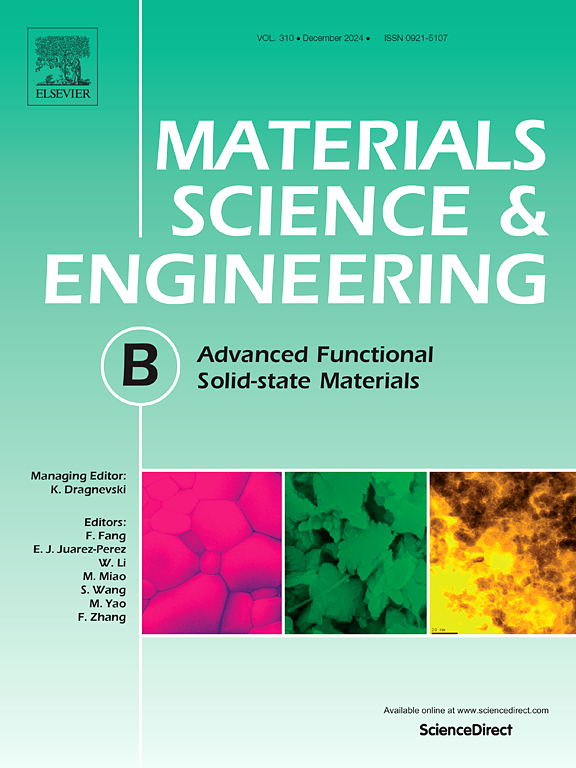Preparation of Mg2Si intermetallic compound by element blending method and reaction mechanism analysis
IF 4.6
3区 材料科学
Q2 MATERIALS SCIENCE, MULTIDISCIPLINARY
引用次数: 0
Abstract
Magnesium silicide (Mg2Si) is a promising thermoelectric material owing to its favorable properties, non-toxicity, and elemental abundance. In this study, a one-step strategy for synthesizing high-purity Mg2Si was developed by combining the elemental blending method with a sandwich-style sample configuration. Thermal analysis confirmed the feasibility of the synthesis process. A systematic investigation was conducted over the temperature range of 650–1100 °C to examine the influence of melting temperature on phase evolution and to elucidate the underlying reaction mechanisms. Characterization results revealed that a minimum temperature of 750 °C was required to ensure the complete conversion of elemental Si into Mg2Si, with both gas–solid and liquid–solid reactions contributing to phase formation. At 1050 °C, the products exhibited a dense and uniform microstructure. Rietveld refinement showed that the direct yield of Mg2Si reached 82.0 %. This method provides a practical route for producing high-purity Mg2Si and offers insights into phase formation via reactive diffusion.
元素共混法制备Mg2Si金属间化合物及反应机理分析
硅化镁(Mg2Si)具有良好的性能、无毒、元素丰富等优点,是一种很有前途的热电材料。在本研究中,通过将元素共混法与三明治样结构相结合,开发了一种一步合成高纯Mg2Si的策略。热分析证实了合成工艺的可行性。在650 ~ 1100℃的温度范围内进行了系统的研究,考察了熔融温度对相演化的影响,并阐明了潜在的反应机制。表征结果表明,保证单质Si完全转化为Mg2Si的最低温度为750℃,气固和液固两种反应都有助于相的形成。在1050℃时,产物呈现致密均匀的微观结构。Rietveld细化表明,Mg2Si的直接收率达到82.0%。该方法为生产高纯度Mg2Si提供了一条实用的途径,并提供了通过反应扩散形成相的见解。
本文章由计算机程序翻译,如有差异,请以英文原文为准。
求助全文
约1分钟内获得全文
求助全文
来源期刊

Materials Science and Engineering: B
工程技术-材料科学:综合
CiteScore
5.60
自引率
2.80%
发文量
481
审稿时长
3.5 months
期刊介绍:
The journal provides an international medium for the publication of theoretical and experimental studies and reviews related to the electronic, electrochemical, ionic, magnetic, optical, and biosensing properties of solid state materials in bulk, thin film and particulate forms. Papers dealing with synthesis, processing, characterization, structure, physical properties and computational aspects of nano-crystalline, crystalline, amorphous and glassy forms of ceramics, semiconductors, layered insertion compounds, low-dimensional compounds and systems, fast-ion conductors, polymers and dielectrics are viewed as suitable for publication. Articles focused on nano-structured aspects of these advanced solid-state materials will also be considered suitable.
 求助内容:
求助内容: 应助结果提醒方式:
应助结果提醒方式:


